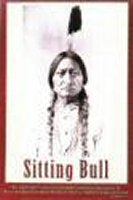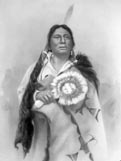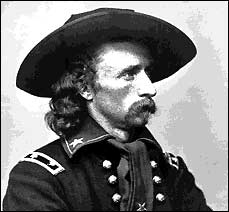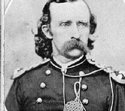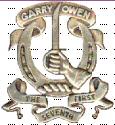|
|
|||||||||||||||
| The Battle! | |||||||||||||||
|
On June 25,1876 General George Armstrong Custer and his command came upon the main camp of Sitting Bull, a Sioux chief, on the Little Bighorn River. When he got to the edge of the camp he attacked and charged through the thickest part of the camp with five companies. As Custer was attacking this side, Major Marcus Reno attacked the other side of the village with seven companies. Soldiers from Reno's company were repulsed and a wholesale slaughter unused. But on the other side of the village Custer and his company were pushed back into the Little Bighorn plains and were slaughtered. Gen. Custer, his brother, nephews, and brother-in-law were killed and not one of his detachments escaped. Once again on the other side of the village, the Indians had surrounded Maj. Renoís command and held them in the hills the whole day, until John Gibbonís command came up and the Indians left. The number of started deaths were 300 soldiers and Indians together and of those 300, 17 were commissioned officers.
The Cover-up
It is said that many orders were disobeyed at the Battle of
Little Bighorn, but not by Custer.
It was said that Maj. Reno and Major Frederick Benteen had been
ordered forward to attack the Indian village, but they didnít.
Because of that, Gen. Custerís command had no help and they all
perished. Although, about
400 soldiers and scouts of Reno and Benteenís commands survived a
two-day siege on a bluff about 4 miles from were Custer was inhabited.
The Indians of the Battle of Little Bighorn
Crazy Horse- (Tashunca-uitco)
(1849-1877)
Crazy Horse is known for being the only in American History to
ever defeat the U.S. Military. He
was a member of the Lakota tribe. He fought in the Plains and Indian
wars from 1865 to 1868, which was led by the Ogala chief Red Cloud.
When the War department ordered all Lakotas to go onto
reservations in 1876, Crazy Horse became a leader in the resistance.
Crazy Horse fought in many battles including Little Bighorn.
But in 1877 when he left the reservation without permission, to
take his sick wife to her parents, General George Crook had him
arrested, fearing he was plotting a battle. He didnít resist arrest at first, but when he realized they
were taking him to a guardhouse he fought back and in the process he
was bayoneted in the back.
- (Tatanka-Iyotanks)
(1831-1890)
Sitting Bull was Known as a great leader in the Little Bighorn
Battle. He was a Hunkpapa
Lakota chief and holy man. He was born around 1831 on the Grand River, in present-day
South Dakota, a place the Lakota called ďMany Caches.Ē Like Crazy Horse, he led warriors to fight Custer and his men
in the Battle of Little Bighorn.
He led many Indians in the Ghost Dance religion, which led to
many battles like Little Bighorn.
But in the fall of 1890 a Lakota policeman put a bullet through
his head. Sitting Bull was buried 3 months later in Fort Yates in
North Dakota.
- (Pizi)
(c.1840-1894)
Gall was a Lakota, who got his name, Gall, because he ate the
gall of an animal killed by a neighbor. He was a warrior in Red
Cloudís campaigns. But
eventually he became Sitting Bullís military chief and led attacks on
troops in many battles including Little Bighorn. After the battle of Little Bighorn he fled to Canada with
Sitting Bull. But a quarrel
between the two forced Gall to lead his band back across the border. He died on Dec. 5, 1894 at his home on Oak Creek in South
Dakota.
The U.S. Military Leaders
George Armstrong Custer
(1839-1876)
|
|||||||||||||||
|
|




